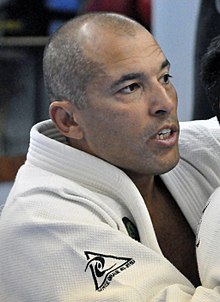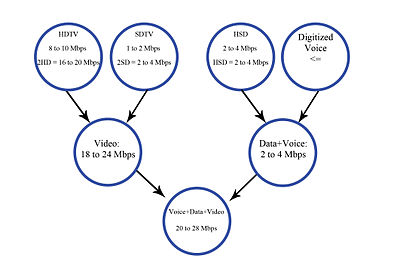IPTV
WHAT IS IPTV
What is IPTV?
Internet-based Protocol Television (IPTV) refers to the streaming of TV programs through broadband Internet rather than the traditional cable or satellite. This TV content is streamed to a set-top box.
Selecting the best IPTV streams can be challenging because of limited information about the quality of the service. We have taken the task of finding the top-rated IPTV service providers that live up to their claims.
Answer: IPTV is an acronym for Internet-based Protocol Television. It refers to a system of delivering TV channels through broadband Internet or Local Area Network (LAN). Customers who buy IPTV subscriptions receive TV shows and Video On Demand (VOD) through Internet Protocol (IP) networks.
Q #2) How does an IPTV work?
Answer: To view IPTV channels, you should have a broadband internet connection and a device to view the content, such as a smart TV, laptop, or smartphone. You can also view IPTV channels if you have an older TV using a set-top box.
WHAT IS VOD
Video on demand (VOD) is a media distribution system that allows users to access to videos, television shows and films without a traditional video playback device and a typical static broadcasting schedule. In the 20th century, broadcasting in the form of over-the-air programming was the most common form of media distribution. As Internet and IPTV technologies continued to develop in the 1990s, consumers began to gravitate towards non-traditional modes of content consumption, which culminated in the arrival of VOD on televisions and personal computers.[1]
Unlike broadcast television, VOD systems initially required each user to have an Internet connection with considerable bandwidth to access each system’s content. In 2000, the Fraunhofer Institute IIS[2] developed the JPEG2000 codec, which enabled the distribution of movies via Digital Cinema Packages. This technology has since expanded its services from feature-film productions to include broadcast television programmes and has led to lower bandwidth requirements for VOD applications. Disney, Paramount, Sony, Universal and Warner Bros. subsequently launched the Digital Cinema Initiative,[3] in 2002.
Television VOD systems can stream content, either through a traditional set-top box or through remote devices such as computers, tablets, and smartphones. VOD users can permanently download content to a device such as a computer, digital video recorder (DVR) or a portable media player for continued viewing. The majority of cable and telephone company–based television providers offer VOD streaming, whereby a user selects a video programme that begins to play immediately, or downloading to a DVR rented or purchased from the provider, or to a PC or to a portable device for deferred viewing.
Streaming media has emerged as an increasingly popular medium of VOD provision. Desktop client applications such as the Apple iTunes online content store and Smart TV apps such as Amazon Prime Video allow temporary rentals and purchases of video entertainment content. Other Internet-based VOD systems provide users with access to bundles of video entertainment content rather than individual movies and shows. The most common of these systems, Netflix, Hulu, Disney+, Peacock, Max and Paramount+, use a subscription model that requires users to pay a monthly fee for access to a selection of movies, television shows, and original series. In contrast, YouTube, another Internet-based VOD system, uses an advertising-funded model in which users can access most of its video content free of cost but must pay a subscription fee for premium content. Some airlines offer VOD services as in-flight entertainment to passengers through video screens embedded in seats or externally provided portable media players.
UFC
The Ultimate Fighting Championship (UFC) is an American mixed martial arts (MMA) promotion company based in Las Vegas, Nevada. It is owned and operated by Zuffa, a wholly owned subsidiary of Endeavor Group Holdings. It is the largest MMA promotion in the world as of 2022. It produces events worldwide that showcase 12 weight divisions (eight men’s and four women’s) and abides by the Unified Rules of Mixed Martial Arts.As of 2022, it had held over 600 events. Dana White has been its president since 2001. Under White’s stewardship, it has grown into a global multi-billion-dollar enterprise.
The UFC was founded by businessman Art Davie and Brazilian martial artist Rorion Gracie, and the first event was held in 1993 at the McNichols Sports Arena in Denver, Colorado. The purpose of the early Ultimate Fighting Championship competitions was to identify the most effective martial art in a contest with minimal rules and no weight classes between competitors of different fighting disciplines. In subsequent events, more rigorous rules were created and fighters began adopting effective techniques from more than one discipline, which indirectly helped create a separate style of fighting known as present-day mixed martial arts. In 2016, UFC’s parent company, Zuffa, was sold to a group led by Endeavor, then known as William Morris Endeavor (WME–IMG), including Silver Lake Partners, Kohlberg Kravis Roberts and MSD Capital[11] for US$4.025 billion.[12] In 2021, Endeavor bought out Zuffa’s other owners at a valuation of $1.7 billion.[5]
With a TV deal and expansion in Australia, Asia, Europe,[13][14][15] and new markets within the United States, the UFC has achieved greater mainstream media coverage. It earned US$609 million in 2015,[16] and its next domestic media rights agreement with ESPN was valued at $1.5 billion over a five-year term.[17]
In April 2023, Endeavor Group Holdings announced that UFC would merge with the wrestling promotion WWE to form TKO Group Holdings, a new public company majority-owned by Endeavor, with Vince McMahon serving as an executive chairman of the new entity and White remaining as UFC president. The merger is expected to be completed in the second half of 2023.[18]
History[edit]
Early 1990s competition[edit]

Art Davie proposed to John Milius and Rorion Gracie an eight-man single-elimination tournament called “War of the Worlds”.[19] It was inspired by the “Gracies in Action” video-series produced by the Gracie family of Brazil which featured Gracie jiu-jitsu students defeating martial artists of various disciplines such as karate, kung fu, and kickboxing on Vale Tudo matches. The tournament would also feature martial artists from different disciplines facing each other in no-holds-barred combat to determine the best martial art, and would aim to replicate the excitement of the matches Davie saw on the videos.[20] Gracie accepted, as he was interested in showcasing and promoting his family’s own jiu-jitsu for an wide audience.[21] Milius, a film director/screenwriter and Gracie student, agreed to be the event’s creative director. Davie drafted the business plan, and 28 investors contributed the initial capital to start WOW Promotions to develop the tournament into a television franchise.[22]
In 1993, WOW Promotions sought a television partner and approached pay-per-view producers TVKO (HBO) and SET (Showtime), and Campbell McLaren and David Isaacs at Semaphore Entertainment Group (SEG). Both TVKO and SET declined, but SEG—a pioneer in pay-per-view television that had produced such offbeat events as a tennis match between Jimmy Connors and Martina Navratilova—became WOW’s partner in May 1993.[23] UFC promoters initially pitched the event as a real-life fighting video game tournament similar to Street Fighter and Mortal Kombat.[24] SEG contacted video and film art director Jason Cusson to design a fighting arena for the event. Rorion and Davie didn’t want a traditional roped ring, citing fears—by showing old Vale Tudo footage—that the fighters could escape through the ropes during grappling and use it as an advantage, or fall off and hurt themselves. SEG’s executives agreed, and also wanted a way to visually differentiate their event from professional boxing and professional wrestling. Some ideas included a traditional roped-ring surrounded by netting, a moat with alligators, a raised platform surrounded by razor-wire fence, electrified fencing, men in togas and netting that could be lowered from the ceiling by a pulley. Eventually Cusson designed an arena with eight sides surrounded by chain-link fence, the trademarked Octagon, which became the event’s signature setting.[25] Cusson remained the group’s production designer through UFC 27.[20] SEG devised the show’s name as The Ultimate Fighting Championship.[26]
WOW Promotions and SEG produced the first event, later retroactively called UFC 1, at McNichols Sports Arena in Denver, Colorado on November 12, 1993. Art Davie was its booker and matchmaker.[27] It proposed to find answers for sports fans’ questions such as, “Can a wrestler beat a boxer?”[28] As with most martial arts at the time, fighters typically had skills in just one discipline and little experience against opponents with differing skills.[29] The television broadcast featured kickboxer Kevin Rosier, taekwondo practitioner Patrick Smith, savate fighter Gerard Gordeau, karate expert Zane Frazier, shootfighter Ken Shamrock, sumo wrestler Teila Tuli, boxer Art Jimmerson, and 175 lb (79 kg) Brazilian jiu-jitsu black belt Royce Gracie—younger brother of UFC co-founder Rorion, whom Rorion selected to represent his family. Royce’s submission skills proved the most effective in the inaugural tournament, earning him the first ever UFC tournament championship after submitting Jimmerson, Shamrock, and Gordeau in succession.[30] The show was extremely successful, with 86,592 pay-per-view television subscribers.[19]
It’s disputed whether the promoters intended the event to be a precursor to future events. “That show was only supposed to be a one-off”, eventual UFC president Dana White said. “It did so well on pay-per-view they decided to do another, and another. Never in a million years did these guys think they were creating a sport.”[31] Davie, in his 2014 book Is This Legal?, an account of the creation of the first UFC event, disputes the perception that the UFC was seen by WOW Promotions and SEG as a one-off, since SEG offered a five-year joint development deal to WOW. He says, “Clearly, both Campbell and Meyrowitz shared my unwavering belief that War of the Worlds[a] would be a continuing series of fighting tournaments—a franchise, rather than a one-night stand.”[32]
With no weight classes, fighters often faced significantly larger or taller opponents. Keith “The Giant Killer” Hackney faced Emmanuel Yarbrough at UFC 3 with a 9-inch height and 400 pounds (180 kg) weight disadvantage.
During this early phase of the organization, the UFC showcased a bevy of styles and fighters. Aside from the aforementioned Royce Gracie, Ken Shamrock, and Patrick Smith, they also featured competitors such as Hall of Famer Dan Severn, Marco Ruas, Gary Goodridge, Don Frye, Kimo Leopoldo, Oleg Taktarov, and Tank Abbott.
In April 1995, following UFC 5 in Charlotte, North Carolina, Davie and Gracie sold their interest in the franchise to SEG and disbanded WOW Promotions.
IPTV
Advantages
The Internet protocol-based platform offers significant advantages, including the ability to integrate television with other IP-based services like high-speed Internet access and VoIP.
A switched IP network also allows for the delivery of significantly more content and functionality. In a typical TV or satellite network, using broadcast video technology, all the content constantly flows downstream to each customer, and the customer switches the content at the set-top box. The customer can select from as many choices as the telecomms, cable or satellite company can stuff into the pipe flowing into the home. A switched IP network works differently. Content remains in the network, and only the content the customer selects is sent into the customer’s home. That frees up bandwidth, and the customer’s choice is less restricted by the size of the pipe into the home.
Interactivity
An IP-based platform also allows significant opportunities to make the TV viewing experience more interactive and personalised. The provider may, for example, include an interactive programme guide that allows viewers to search for content by title or actor’s name, or a picture-in-picture functionality that allows them to channel surf without leaving the programme they’re watching. Viewers may be able to look up a player’s stats while watching a sports game or control the camera angle. They also may be able to access photos or music from their PC on their television, use a wireless phone to schedule a recording of their favourite show, or even adjust parental controls so their child can watch a documentary for a school report, while they’re away from home.
A feedback channel from the viewer to the provider is required for this interactivity. Terrestrial, satellite, and some cable networks for television do not feature a feedback channel and thus don’t allow interactivity. However, interactivity with those networks can be possible by combining TV networks with data networks such as the Internet or a mobile communication network.
Video on demand
IPTV technology is used for video on demand (VOD),[59] which permits a customer to browse an online programme or film catalogue, to watch trailers and to then select a program. The playout of the selected item starts nearly instantaneously on the customer’s TV or PC.
Technically, when the customer selects the program, a point-to-point unicast connection is set up between the customer’s decoder (set-top box or PC) and the delivering streaming server. The signalling for the trick mode functionality (pause, slow-motion, wind/rewind etc.) may be communicated using, for instance, RTSP.
In an attempt to avoid content piracy, the VOD content is usually encrypted and digital rights management may be applied. A film that is chosen, for example, may be playable for 24 hours following payment, after which time it becomes unavailable.
IPTV-based converged services
Another advantage is the opportunity for integration and convergence. This opportunity is amplified when using IMS-based solutions. Converged services implies interaction of existing services in a seamless manner to create new value-added services. One example is on-screen caller ID, getting caller ID on a TV, and the ability to handle the call (send it to voice mail, etc.). IP-based services help to provide consumers anytime and anywhere access to content over their televisions, PCs, and mobile device, and to integrate services and content to tie them together. Within businesses and institutions, IPTV eliminates the need to run a parallel infrastructure to deliver live and stored video services.
Limitations
IPTV is sensitive to packet loss and delays. An IPTV channel has a minimum bandwidth requirement. Some systems are able to adapt to lower available bandwidth by reducing picture quality.
Although a few countries have very high-speed broadband-enabled populations,[a] in other countries legacy networks struggle to provide 3–5 Mbit/s and so simultaneous use of IPTV, VOIP and Internet access may not be viable. The last-mile delivery for IPTV usually has a bandwidth restriction that only allows a small number of simultaneous TV channel streams – typically from one to three – to be delivered.
Latency
The network delay inherent in the use of satellite Internet access is often held up as a reason why satellites cannot be successfully used for IPTV. In practice, however, delay is not an important factor for IPTV, since it is a service that does not require real-time transmission, as is the case with telephony or videoconferencing services. It is the delay of response to requests to change channel, display an EPG, etc. that most affects customers’ perceived quality of service.
Existing video transmission systems of both analogue and digital formats already introduce known quantifiable delays. Existing DVB TV channels that simulcast by both terrestrial and satellite transmissions experience the same 0.25-second delay difference between the two services with no detrimental effect, and it goes unnoticed by viewers.
Bandwidth requirements
Digital video is a sequence of digital images, called frames, each made up of pixels or picture elements. Three bytes are typically used to represent the colour of the high quality image.
Movies use 24 frames per second, North America television uses approximately 30 frames per second where the Europe television frame rate is 25 frames per second. Each digital video has dimensions width and height; SDTV is 720 × 480 pixels, HDTV uses up to 1920 × 1080 pixels.
For checking the bandwidth requirements, you need to dimension your IPTV service, such as defining number of SD and HD TV channels, number of planned subscribers, VOD and nPVR concurrency. Based on these, you can calculate required bandwidth on each DSL line, in access network and in core IP network.
Privacy implications
Due to limitations in bandwidth, an IPTV channel is delivered to the user one at a time. Changing a channel requires requesting the head-end server to provide a different broadcast stream, much like VOD. This could enable the service provider to accurately track each and every programme watched and the duration of watching for each viewer. In conjunction with regulatory differences between IPTV and cable TV, this tracking could pose a threat to privacy according to critics. For IP multicast scenarios, since a particular multicast group (TV channel) needs to be requested before it can be viewed, the same privacy concerns apply.


